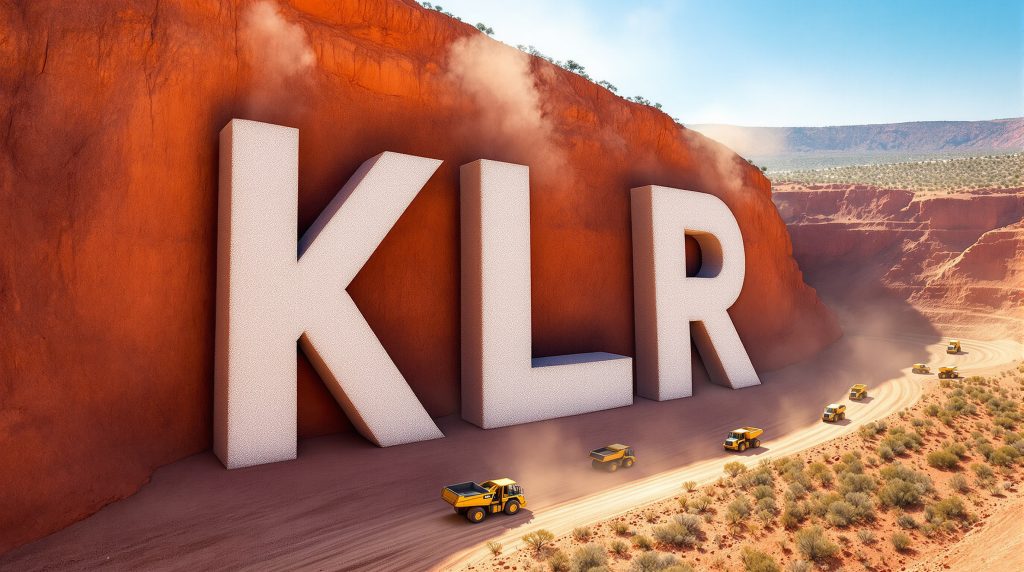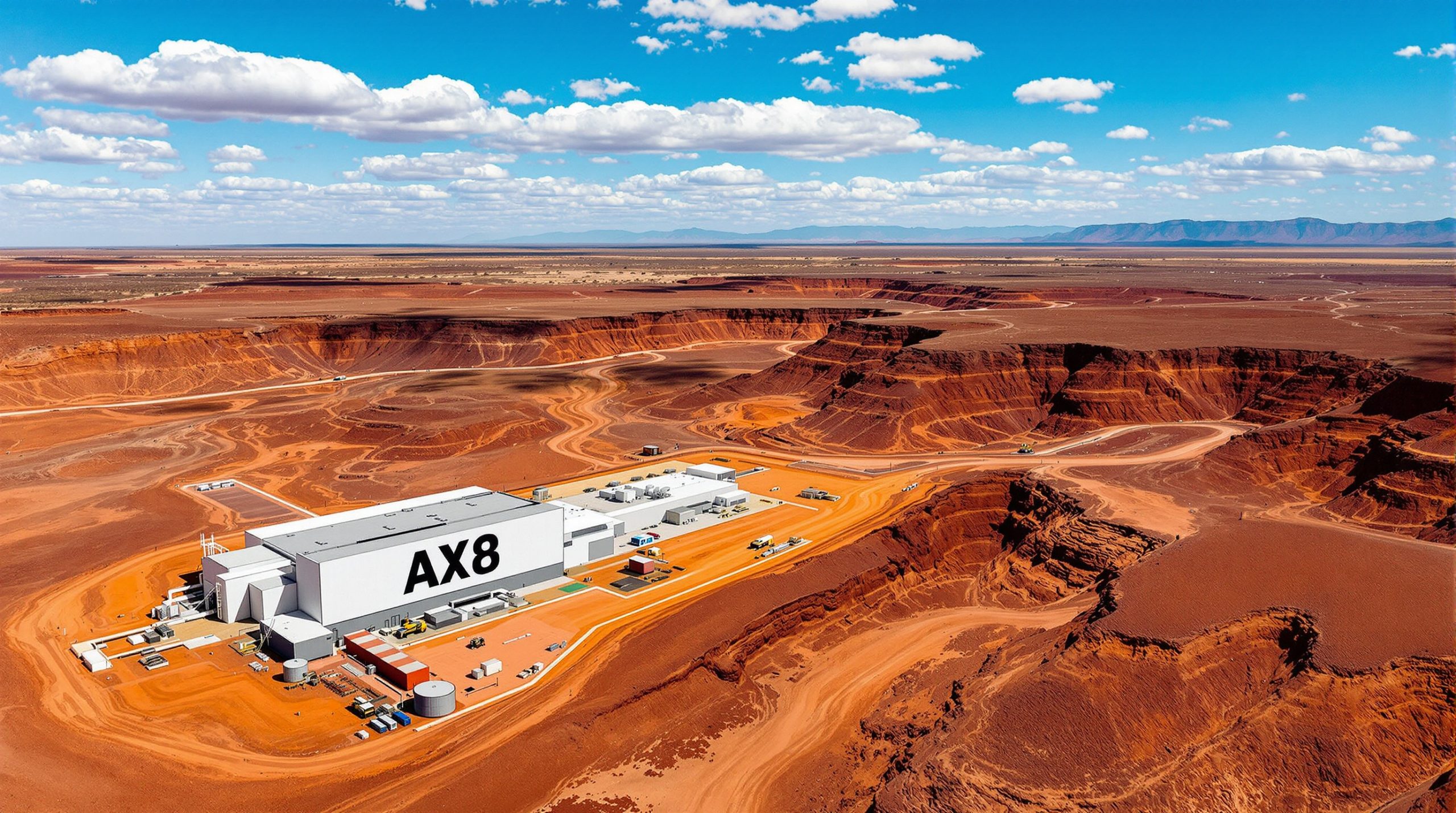Kaili Resources Hits High-Grade Rare Earth Elements at Limestone Coast Project
Kaili Resources Limited has delivered impressive rare earth element (REE) assay results from its recent aircore drilling program at the Limestone Coast Mallee Project in South Australia. The company received laboratory results showing significant Total Rare Earth Oxide (TREO) concentrations up to 517.02ppm, positioning the project as a promising exploration target in one of Australia's emerging REE provinces.
The standout Kaili Resources rare earth results from 44 selected samples include 25CDAC019: 517.02ppm TREO at 8-9m depth, 25CDAC024: 467.64ppm TREO at 5-6m depth, 25CDAC004: 445.74ppm TREO at 16-17m depth, and 25KTAC013: 321.31ppm TREO at 13-14m depth.
These results follow Kaili's strategic September 2025 drilling program across three exploration licences (EL 6856, 6977, and 6978) covering approximately 200 kilometres east of Adelaide. Furthermore, the company's approach of widely-spaced drilling along road verges has successfully identified areas of REE potential, particularly within the Coodalya tenement.
Strong Regional Context Validates Exploration Strategy
The Kaili Resources rare earth results gain significant credibility from the regional success of Australian Rare Earths (ASX:AR3), which has established a JORC 2012 resource of 236Mt @ 748ppm TREO in nearby tenements. Moreover, AR3 is advancing pre-feasibility studies, demonstrating the commercial viability of REE deposits in the Murray Basin's Loxton/Parilla Sands formation.
The geological setting targets ionic clay-style deposits within geological formations known as Tertiary strandlines, where REEs are contained in fine clay particles. In addition, this deposit type has proven successful globally and offers potentially simpler processing compared to traditional hard rock REE deposits.
| Key Project Metrics | Details |
|---|---|
| Total Holes Drilled | 54 aircore holes |
| Total Metres | 973m |
| Samples Analysed | 44 selected samples |
| Target Geology | Loxton/Parilla Sands |
| Deposit Style | Ionic clay REE deposits |
| Average Depth | 18m (max 20m) |
Understanding Ionic Clay REE Deposits: A Primer for Investors
Ionic clay rare earth deposits represent one of the most economically attractive sources of REEs globally. Unlike traditional hard rock deposits that require energy-intensive processing, ionic clay deposits allow REEs to be extracted using simple acid leaching techniques.
These deposits form when REE-bearing minerals weather over millions of years, with the valuable elements becoming attached to clay particles. Consequently, the shallow, near-surface nature of these deposits means lower mining costs and simpler metallurgy.
China has dominated global REE supply largely through ionic clay deposits, making similar Australian discoveries strategically significant for supply chain diversification. The Murray Basin's geological history created ideal conditions for ionic clay formation, with ancient strandlines concentrating REEs in accessible clay horizons.
How Natural Concentration Processes Work
These ancient coastal environments concentrated heavy minerals and rare earth elements through natural sorting processes over geological time periods. For instance, wave action and tidal forces naturally separated and concentrated valuable minerals in specific geological zones.
Strategic Next Steps Target Resource Definition
"The drill holes for the drilling program are purposely widely spaced along road verges to cover large areas across the 3 tenements at low cost to direct our focus for subsequent infill drilling programs. The results indicate there is REE potential particularly within the Coodalya tenement to warrant further REE drill testing," noted the company's Principal Geologist.
The positive Kaili Resources rare earth results, particularly within the Coodalya tenement, warrant systematic follow-up exploration. However, the company must now transition from reconnaissance to detailed resource definition.
Planned activities include:
- Infill drilling programs in areas showing elevated TREO results
- Extension drilling along identified trends
- Detailed sampling within freehold land parcels adjacent to successful road verge drilling
- Resource estimation studies if infill drilling confirms continuity
The company's systematic approach mirrors successful regional explorers, with road verge drilling providing cost-effective reconnaissance before more intensive programs on private land.
Investment Thesis: Strategic REE Exposure in Proven Province
Kaili Resources offers investors direct exposure to Australia's emerging rare earth sector through a systematic exploration approach in a proven geological province. Furthermore, the Limestone Coast project benefits from significant geological and strategic advantages.
Geological Advantages
The project demonstrates proven REE-bearing Loxton/Parilla Sands formation with shallow, low-cost drilling targets. Additionally, ionic clay deposit potential offers simple processing compared to hard rock alternatives.
Strategic Location Benefits
Located 200km from Adelaide with highway access, the project enjoys established infrastructure and mining-friendly jurisdiction. Moreover, proximity to AR3's significant resource provides proof of concept for the geological setting.
| TREO Results Comparison | Grade (ppm) | Depth (m) |
|---|---|---|
| 25CDAC019 | 517.02 | 8-9 |
| 25CDAC024 | 467.64 | 5-6 |
| 25CDAC004 | 445.74 | 16-17 |
| 25KTAC013 | 321.31 | 13-14 |
Exploration Momentum
High-grade TREO results up to 517.02ppm demonstrate systematic drilling approach identifying priority areas. In addition, multiple tenements provide exploration optionality across a substantial land package.
Why Should Investors Monitor Kaili Resources?
The global transition to renewable energy and electric vehicles has created unprecedented demand for rare earth elements, making strategic REE assets increasingly valuable. Consequently, the Kaili Resources rare earth results demonstrate the company has positioned itself in one of Australia's most prospective REE provinces.
The company's results validate the regional REE potential while providing multiple exploration targets for resource development. With Australian Rare Earths demonstrating commercial viability in adjacent areas, Kaili's tenements offer similar geological potential in an established REE district.
Furthermore, the shallow nature of the targets and simple ionic clay processing requirements could lead to lower capital intensity compared to traditional hard rock REE projects. This potentially accelerates development timelines and improves project economics.
The company's drilling program across 54 holes for 973 metres represents a comprehensive initial assessment of the project area. However, the selection of 44 samples for detailed analysis demonstrates a targeted approach to identifying the highest-grade mineralisation zones.
Regional Success Provides Development Template
Australian Rare Earths' nearby success provides a clear development template for similar ionic clay deposits in the region. Their 236Mt resource at 748ppm TREO demonstrates that substantial REE resources can be established in the Murray Basin geological setting.
The progression from exploration through to pre-feasibility studies at AR3 provides investors with visibility on potential development timelines and project economics for similar deposits. This regional validation reduces geological risk for Kaili's exploration program.
Moreover, the proximity to established infrastructure and Adelaide's port facilities positions the Limestone Coast project advantageously for potential future development scenarios. The existing transport links and port access could significantly reduce project development costs.
Market Context and Supply Chain Significance
Global REE supply chains remain heavily concentrated in China, creating strategic importance for new Australian sources. The Kaili Resources rare earth results contribute to Australia's efforts to diversify global REE supply chains and reduce strategic mineral dependencies.
The ionic clay deposit style targeted by Kaili mirrors successful Chinese operations, suggesting potential for similar processing techniques and economic outcomes. However, Australian regulatory environments and environmental standards may require adapted approaches.
"Key Takeaway: Kaili Resources has established itself as a significant player in Australia's emerging rare earth sector, with high-grade results up to 517.02ppm TREO positioning the Limestone Coast project for systematic resource development. With proven geology, strategic location, and multiple exploration targets, investors should monitor Kaili's progress as it advances toward resource definition."
Looking to Capitalise on Australia's Emerging Rare Earth Discoveries?
Discovery Alert's proprietary Discovery IQ model delivers real-time alerts on significant rare earth and mineral discoveries across the ASX, instantly empowering subscribers to identify actionable opportunities ahead of the broader market like Kaili Resources' impressive 517.02ppm TREO results. Understand why major mineral discoveries can lead to substantial market returns and begin your 30-day free trial today to position yourself ahead of the market with advanced AI-powered insights.




